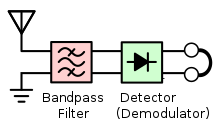Dr_Doggy
Well-Known Member
would this work to make an amfm radio receiver:
http://www.amalgamate2000.com/radio-hobbies/radio/ne567_tone_decoder_as_am_fm___de.htm
?
I would like to have digital tuning, could I tie pin6 to microcontroller somehow?
could i use this chip:
http://www.digikey.ca/product-detail/en/analog-devices-inc/AD9901KQ/AD9901KQ-ND/622647
i like it better cos of broader range
could i use this as eeg band filter, would i need preamp? ,would preamp help radio?
http://www.amalgamate2000.com/radio-hobbies/radio/ne567_tone_decoder_as_am_fm___de.htm
?
I would like to have digital tuning, could I tie pin6 to microcontroller somehow?
could i use this chip:
http://www.digikey.ca/product-detail/en/analog-devices-inc/AD9901KQ/AD9901KQ-ND/622647
i like it better cos of broader range
could i use this as eeg band filter, would i need preamp? ,would preamp help radio?





